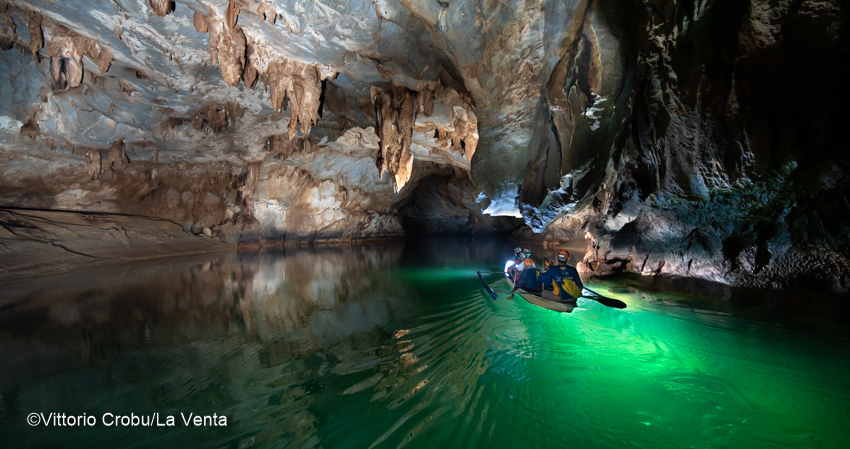In the moment we prepare to leave the island of Palawan, we rearrange the materials with a feeling that is certainly not that of a farewell. We have the great pleasure of entrusting the tasks to the mature local group PSG (Palawan Speleological Guild). The extraordinary scenarios offered by the immensity of the cave and the authentic collaboration born with the Filippini, a group that operates autonomously as if they were an arm of La Venta, highlights how an exploratory project ten thousand kilometers away and seven hours of time zone can survive independently even without our presence. The constant contacts and common strategies have in fact opened up the many expected results in the last two years of the PSG's initiative.
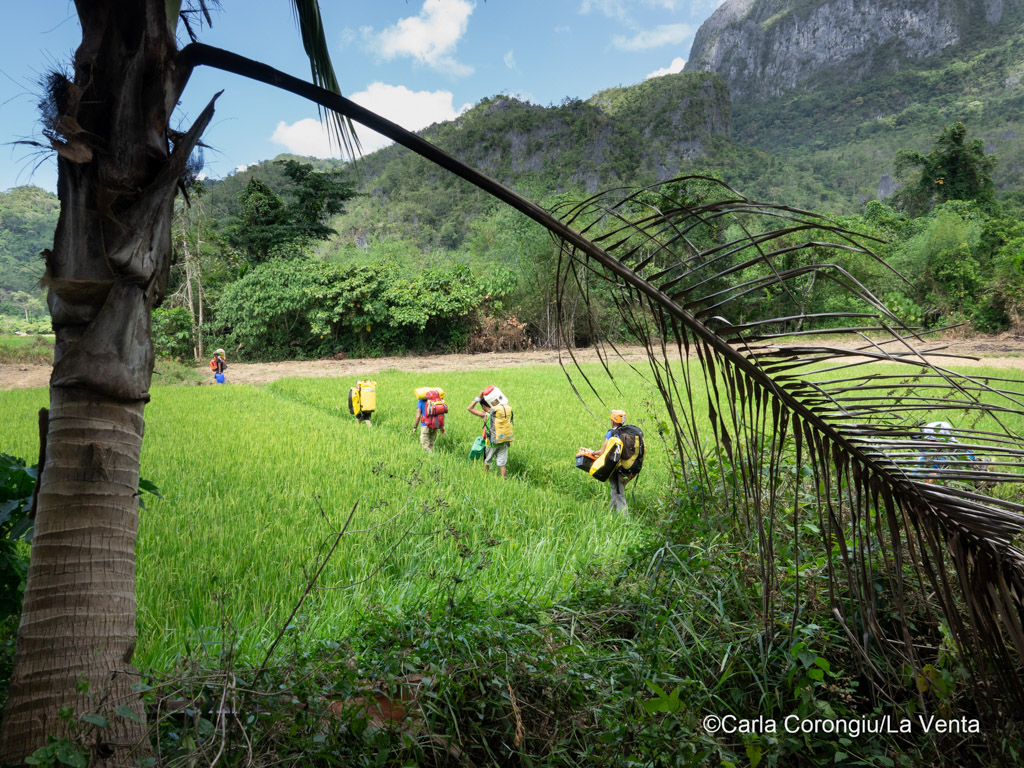
Thanks to a strong agreement with the PSG and Jones Tabujara president of the group, the cave upstream of the system has had significant developments, at the same time other hypotheses are showing us the key to new exploratory adventures. Looking at the size of the Underground River which exceeds 35 km in development, we can easily guess how many branches are still waiting to be explored. But one of the most important areas of the cavity is the one that receives the upstream water supplies and that we know as Daylight, the target of this joint expedition. The spectacular high entrance to the system is home to one of the main underground tributaries of the system, which originates from the capture of the Cabayugan stream at an important sinkhole. The logistics have been well organized by the locals with the support of Dennis Andrew Golez with his private vehicle, he has seen the precious collaboration of the PAMB (Protected Area Management Board) body that manages the protected area, which offered vehicles and park guard.
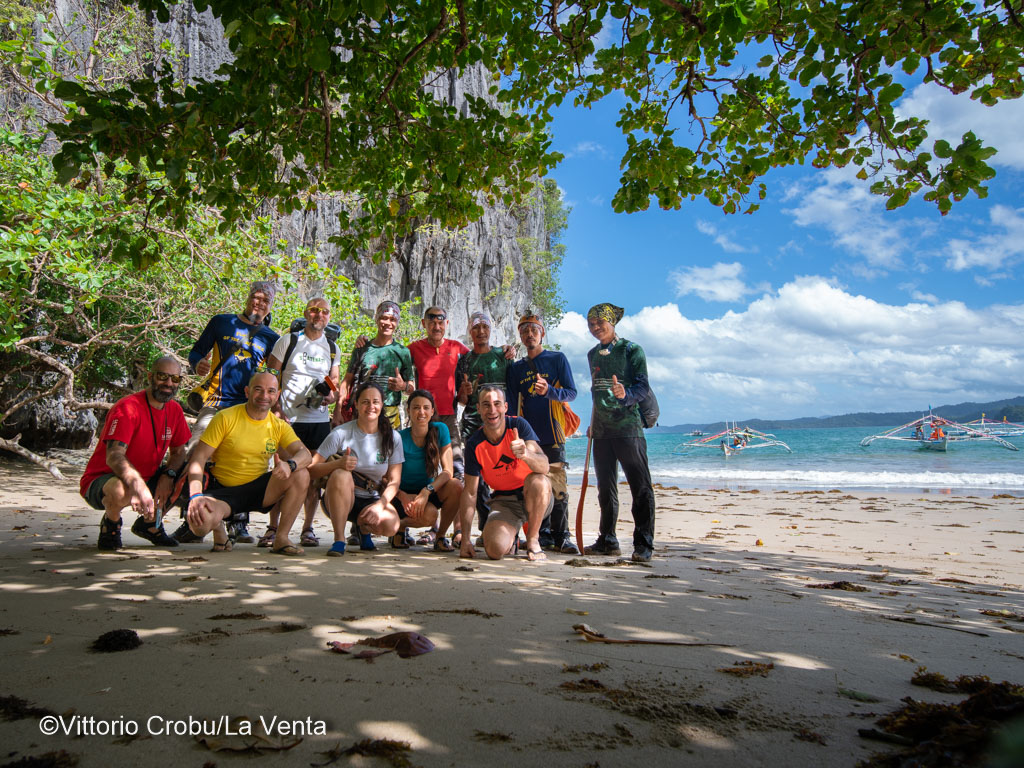
Seven Italians and as many Filipinos engaged in the handling of materials, also a farmer with his own Carabao, the water buffalo equipped with a traditional sled. Through the rice fields we arrived at the "Paroparo" field (in the local language Falena), furnished early with every comfort, tents and colorful hammocks. Paroparo is a large rocky shelter that opens onto the forest with a typically tropical beauty, which welcomed us during the nine unforgettable days of stay. An almost sacred place to gather together, exchange ideas and refresh ourselves after a hard day in the cave, welcoming also due to the dry season that has relieved us of the many inconveniences experienced in previous expeditions from the rainy climate. The presence of a river and a source has greatly simplified the stay. The mild but far from silent nights are spent at the rhythm of an unstoppable life, among flying foxes that bombed us the tents of gnawed seeds, toads, frogs and crickets of all kinds, and at dawn the usual awakening in the confusion of myriads of birds, monkeys, flying squirrels and particular crickets that sing with the unthinkable intensity of mad alarms.

While in Italy the pandemic for the Corona virus grows from north to south, our friends Fabio and Ilenia unfortunately see their flight canceled to reach us. In Palawan the days flow happily and without alarmism, even more relaxed for us who are immersed in the total tranquility of nature. We have a load of new LED systems for Filipinos and a wealth of technical equipment, measuring instruments, drills, ropes, harnesses etc., offered by friends and associations for the local group. The first cave activity was to equip a new entrance found by the Filipinos, which made the descents in the Underground River considerably easier than the classic Daylight route used previously. We then arm an artificial ascent and soon reach a clearly visible branch that opens into the grandiose tunnels just upstream of the Daylight. The idea is to go through the fossil ways, avoiding the water that is the queen in this cave. The upper areas rich in fauna were presented to us with beautiful galleries, along a path interspersed with wells to traverse and descend. The guano, the mud, the insects and the humid heat have made this very technical progression complicated. An interesting tangle of galleries, some of which connect directly with the assets. A few days were also dedicated to the recovery of measuring instruments left by previous expeditions along the cave and to the documentation of various morphologies produced by the guano on the rocky surfaces (Guano Holes).
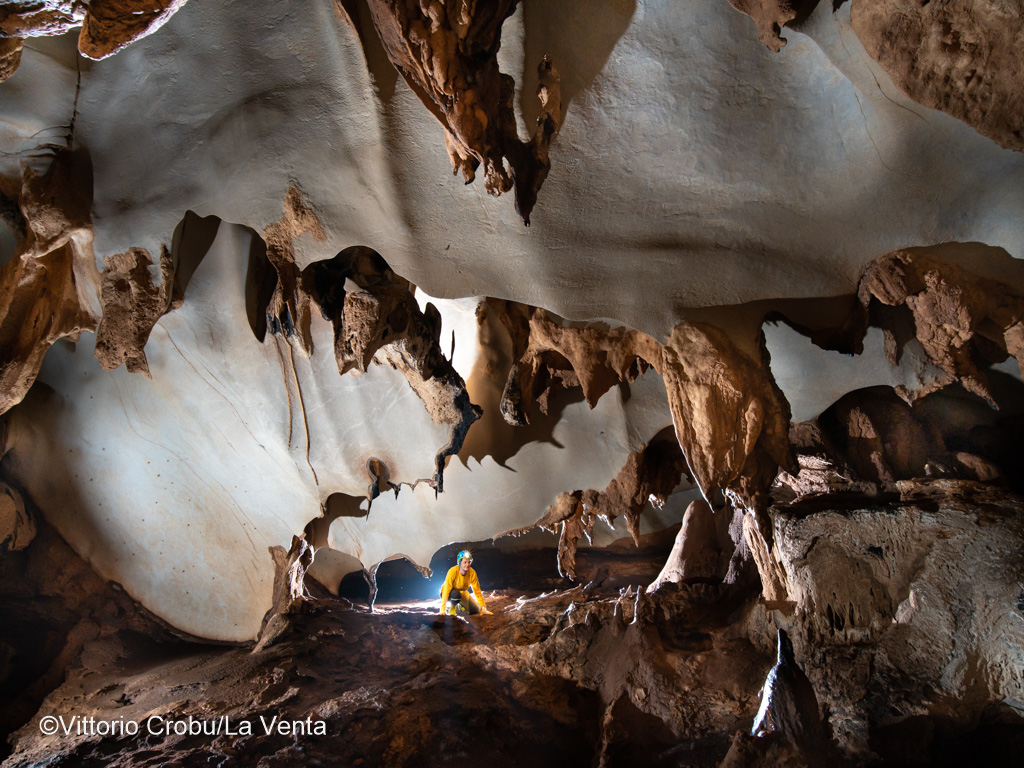
The internal ecosystem has stunned us once again for the wealth of animal species, and after sunset a phenomenon begins that takes our breath away, as we swim through huge halls crowded with tens of thousands of confused Salangane in flight, that emit deafening pops of their rudimentary navigation system in total darkness, an unexpected and shocking sight for those who do not know this cave. The seasonal minimum level of the lakes present in the active branches in exploration has allowed us to enter new branches thanks to short and exciting apnea dives. The phreatic morphologies have accompanied us along these areas sculpted by exceptional shapes, with scallops that decorate every surface on the living, shiny and compact rock.
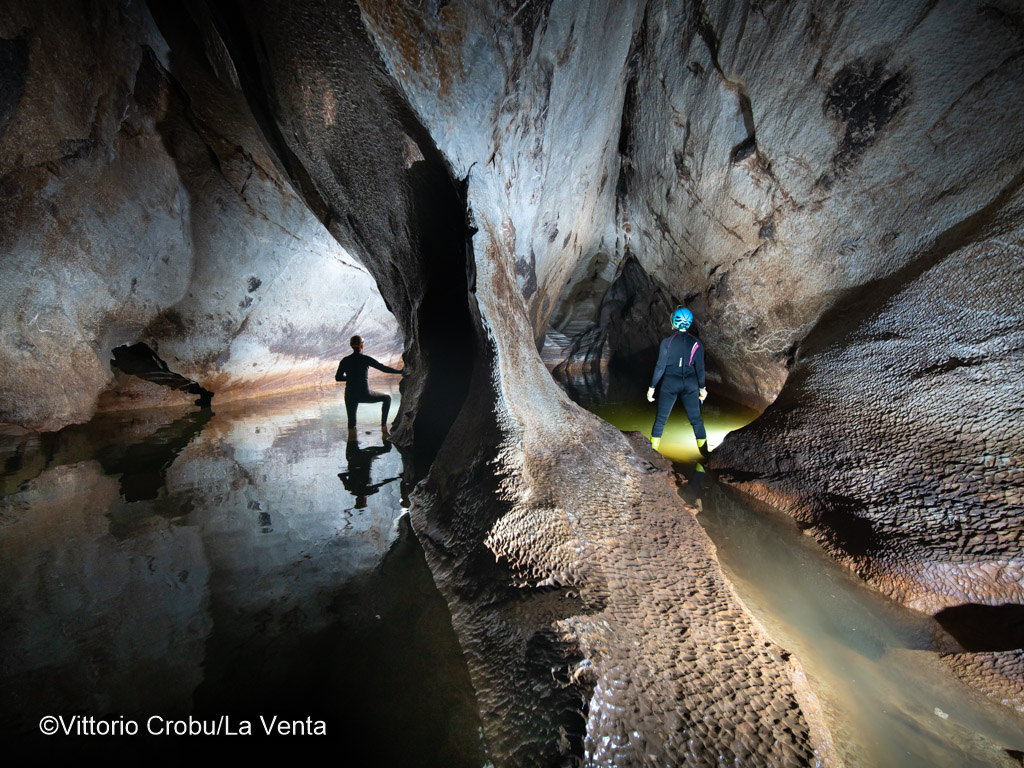
Exciting discoveries immersed in these fresh waters, which without the comfort of a wet suit have guaranteed many thrills to the team of strongly determined Filipino friends. The local group continued the work of topographical relief of the flooded branches, while we took care to equip the routes and other ascents with artificial and free rope, documenting the new parts with photos and videos. Pleasant moments that also cleaned the equipment for a few hours, often smeared with mud and guano, the right occasion to feel a fresh refreshment in this boiling cave. The calendar of activities has been programmed day by day, a simplified management that has made us enjoy our presence in such a unique environment without stress. On the last day we dedicated our energies to another ascent, placed in an aquatic branch present in the active Inflow cave, a cavity explored by friends of the PSG connected with the important sinkhole of the Rio Cabayugan. Two kilometers of tunnels that are very close to the active area explored under the Daylight and certainly interconnected by the submerged network, along these environments we find the same intriguing morphologies and the presence of siphoning branches that surely conceal other connections with new tributaries.

The groundwater grid south of the Underground River still remains unexplored and at this time it appears to be one of the most intricate areas of the cave, due to the need to be explored with speleosubwater techniques. The limestone area that extends south of the cave has an area of ??over seven square kilometers, great development potential for the whole system. The view that the drone gives us during flights, offers reasons for starting to explore a terrain that is complicated to traverse, where imposing surface phenomena such as wells and deep sinkholes are visible, which in many other past expeditions we have tried to reach, but with few results. The line of research in these new branches at the high end of the system opens interesting scenarios finally penetrating under the adjacent karst area and hydrologically connected to the cave. Our Filipino friends meanwhile continue their search, and we are preparing to be able to reach them as soon as possible.
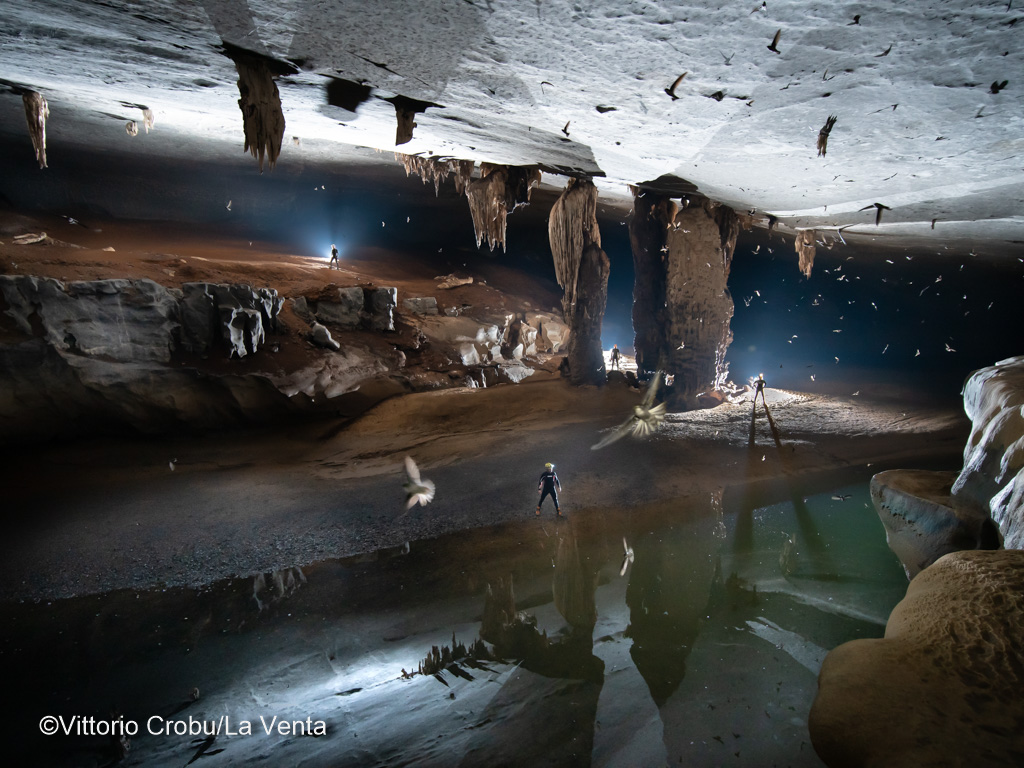
Participants: Alfredo Brunetti, Carla Corongiu, Vittorio Crobu, Carolina Maimone, Igor Marini, Andrea Meloni, Patrizio Rubcich, Noel "Jones" Tabujara, Edralin Orpilla, Bebim Jala, Luisito Celino, Jered Maquitoque, Rymond Camron, Solomon Calago, Dennis Andrew Golez, Arnold Magallanes, Bobby Nasuduan, Gullermo Celino.
Acknowledgments: Elisabeth MacLane, PAMB, Associazione Speleologica Progetto Supramonte, Matteo Casula, Salvatore Manca, Gruppo Archeo Speleo Ambientale Urzulei, Andrea Argiolas “Argolamp”, Fabio Giannuzzi, Ilenia D’Angeli.
Sponsors: Amphibious, Ferrino, Gaibana, Insula, Italcrane, Mondolavoro, Mytho, Scurion, SRC.



